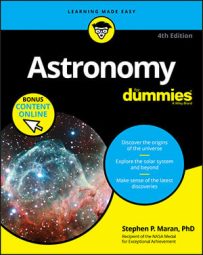2000 B.C. According to legend, two Chinese astronomers are executed for not predicting an eclipse and for being drunk as it happened.
129 B.C. Hipparchos completes the first catalog of the stars.
A.D. 150 Ptolemy publishes his theory of the Earth-centered universe.
970 al-Sufi prepares catalog of over 1,000 stars.
1420 Ulugh-Beg, prince of Turkestan, builds a great observatory and prepares tables of planet and star data.
1543 While on his deathbed, Copernicus publishes his theory that planets orbit around the Sun.
1609 Galileo discovers the moons of Jupiter, craters on Earth’s Moon, the turning of the Sun, and the presence of innumerable stars in the Milky Way with a telescope that he built.
1666 Isaac Newton begins his work on the theory of universal gravitation.
1705 Edmond Halley predicts that a great comet will return in 1758.
1758 On Christmas, farmer/and amateur astronomer Johann Palitzch discovers the return of Halley’s Comet.
1781 William Herschel discovers Uranus.
1791 Benjamin Banneker, the first African-American scientist, begins star observations needed for the geographical survey to establish the future capital city of the United States, Washington, D.C.
1833 Abraham Lincoln and thousands of others see an enormous meteor shower over North America on November 12th and 13th.
1842 Christian Doppler discovers the principle by which sound or light shifts in frequency and wavelength due to the motion of its source with respect to the observer.
1846 Johann Galle is the first person to spot Neptune.
1910 Earth passes through the tail of Halley’s Comet.
1916 Albert Einstein proposes the General Theory of Relativity, which explains the nature of gravity and predicts how the path taken by light is bent when it passes near a massive object such as the Sun.
1923 Edwin Hubble proves that other galaxies lie beyond the Milky Way.
1930 Clyde Tombaugh discovers Pluto.
1931 Karl Jansky discovers radio waves from space.
1939 Hans Bethe explains the energy source of the Sun and other stars.
1940 Grote Reber reports the first radio telescope survey of the sky.
1957 Geoffrey Burbidge, E. Margaret Burbidge, William Fowler, and Fred Hoyle explain how elements form in stars.
1963 Maarten Schmidt discovers that quasars are located at immense distances from the Milky Way and are thus brighter than most other objects in the universe.
1996–1998 Reinhard Genzel (Germany) and Andrea Ghez (United States) and their coworkers find conclusive evidence for a supermassive black hole at the center of the Milky Way.
2003–2004 The Hubble Space Telescope makes repeated images of a region of the sky that, combined together, make up the Hubble Ultra-Deep Field, the deepest picture of the universe ever made.
2015 The Laser Interferometer Gravitational-Wave Observatory reports the detection of gravitational waves from the merger of two black holes about 1.3 billion light-years from Earth.

